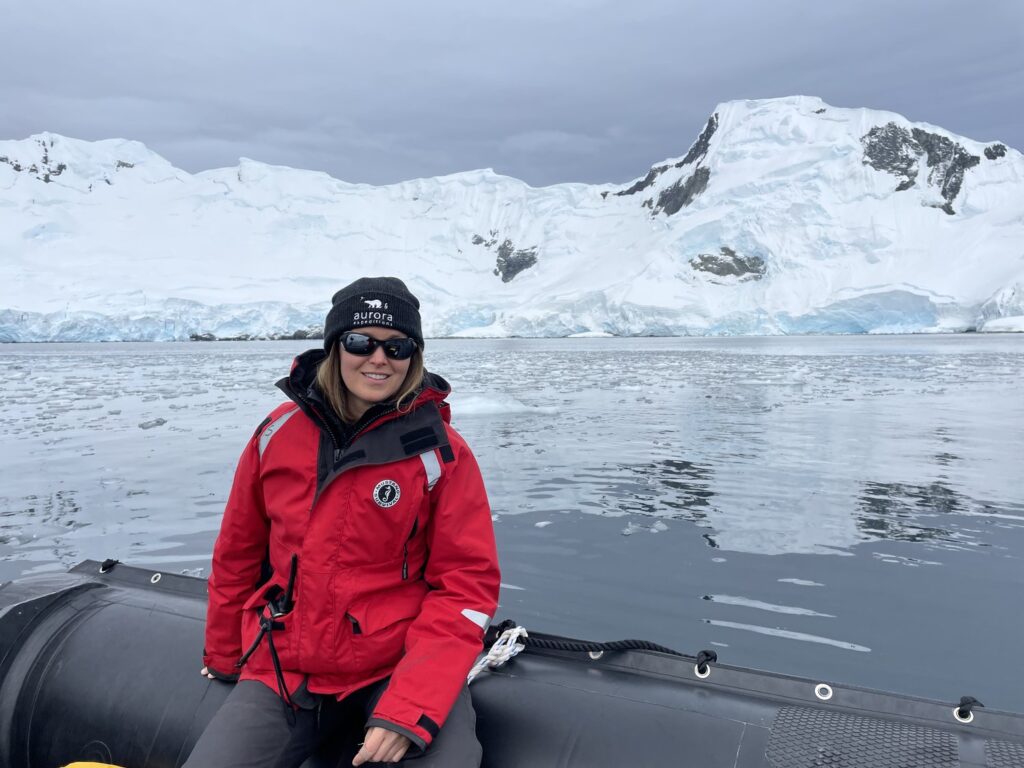Glaciologist, geologist, and mountaineer Dr. Ulyana Horodyskyj Peña is the head of communications for the University of Colorado Boulder’s Climate Adaptation Science Center. Her research has covered the growth of supraglacial lakes and flooding on Himalayan glaciers, as well as the impacts of pollution and soot falling on snow and ice in high latitudes and altitudes. By the time she turned 23, she had traveled to and worked on all 7 continents. In 2016, Ulyana was chosen as mission commander for the NASA Johnson Space Center’s HERA (Human Exploration Research Analog) 30-day isolation experiment, simulating a long-duration mission to an asteroid. She was named one of 120 semifinalists out of 18,354 applicants for NASA’s 2017 astronaut class.
In February 2025, Ulyana carried WINGS Flag #38 on her expedition to the St. Lawrence Gulf, in Canada to study the spatial distribution and impact of Light-Absorbing Particulates (LAPs), and the impacts of contaminants on snow and ice melt along the St. Lawrence Gulf in the heart of the winter. There is no baseline information on the presence of LAPs during the winter season in this particular region, which is susceptible to contamination from North American industrial pollution. Sampling of snow and ice was performed in tandem with air pollution measurements using a commercially available portable sensor from PurpleAir. This sensor measured distribution of particulates in the air during the time of sampling, as well as during ship travel. This baseline data on LAPs in the St. Lawrence Gulf (Canada) will be compared with results from samples collected in Baffin Island by fellow scientists and explorer Felicity Aston and the B.I.G (Before It’s Gone) team, helping to determine air quality data and provide information on ship pollution and pollution from nearby industrial sources.
Previously, Ulyana carried WINGS Flag #25 to Antarctica aboard Le Commandant Charcot, PONANT’s icebreaker ship, in January 2024. The expedition sailed from the far south of the American continent, starting in Ushuaia, Argentina, and completed a half-circumnavigation of Antarctica, before pulling into port in New Zealand a month later. Locations visited will include the Bellingshausen Sea, Amundsen Sea, and Ross Sea along West Antarctica, to study the spatial distribution of pollutants (black carbon, BC), to quantify the extent of human impact to this pristine region.
Prior research in Antarctica investigated BC at depth, deep within Antarctic ice cores, to determine temporal changes. BC distribution has been researched spatially along the Antarctic Peninsula, where most tourism activities occur, and further inland to Union Glacier, where research activities take place. The goal of making measurements and observations along the West Antarctic ice sheet was to help fill in a scientific gap in knowledge on the spatial distribution and impacts of BC in a remote and seldom visited coastal region of Antarctica. Deposition of black carbon or soot on snow and ice is affecting glaciers and icecaps around the world. When these contaminants fall on clean snow and ice, they absorb more of the sun’s energy due to their dark color, making the snow/ice surface less reflective than it usually is. This leads to accelerated melting. Soot comes from incomplete combustion of fossil fuels as well as wildfires.






